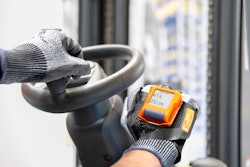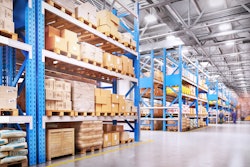
Today, warehouses in the supply chain are more complicated than ever, from meeting constant and growing customer demand, especially in the ecommerce sector, to an ever-growing selection of products and even globalization. Warehouse operations that are in tip-top shape have never been more important.
An inefficient warehouse will negatively impact every other part of the business, from sales to customer service and daily operations. Naturally, a highly optimized warehouse provides benefits and profits to the business as well as a “positive halo effect” across the entire supply chain.
Warehouse optimization refers to the process of improving the efficiency and effectiveness of a warehouse's operations, layout and processes to maximize productivity while minimizing costs. The primary goal is to streamline the flow of goods through the warehouse, enhance order fulfillment speed, reduce errors and utilize resources more effectively.
This has become a hot topic in light of the explosion of AI, Artificial Intelligence, software and other innovative new tools. Machine learning and robotics, in particular, are changing the landscape for the future of material handling. If you scan the agendas at industry events, you’ll find dozens of speakers and hundreds of companies leveraging the remarkable possibilities. Not surprisingly, SDCE references AI almost 5,000 times when you search the publication’s website.
At the same time, we may be in the “too much, too fast” segment of AI product development when it comes to logistics. The best warehouse operations also value the insight and expertise of human beings, who should always be the backbone of a successful model.
Compliance is an important area that must remain on the radar because it’s not one where AI can be fully trusted. This requires 100% accuracy, something only a real expert can understand and back up.
Given this landscape, let’s consider the foundational aspects of warehouse optimization. This means an eye for innovation that supports the business and is sensitive not to bankrupt the company. As you build your plan to optimize your warehouse(s) it is prudent to incorporate a blend of automation, technology and human interdependencies to create process efficiencies.
Best Practices for B2B and B2C Commerce
Efficient Layout
Warehouse optimization starts with an efficient layout that meets your needs now with plans for future growth. Do you have a clear highway for material handling equipment that is safe and effective? Map the flow of inbound inventory and products for efficient staging and put away. Storage areas should be designed with SKU velocity in mind with automation tools that have predetermined the slotting strategy, bin sizes and replenishment cycles. Be mindful of the human traffic and number of footsteps to access production/assembly areas. At the heart of the layout should be a detailed inventory management plan managed with a WMS.
5S – “The Toyota Way”
It’s not old school, it’s ‘the’ school. Sort, Streamline, Shine, Standardize, Strive (and the 6th S is Safety). These principles of LEAN Six Sigma manufacturing can be quickly incorporated into your existing warehouse operations. In fact, these tasks should become cultural, with every employee in sync with the processes that create efficiency. Standardization is an area that lends itself to machine learning and automation tools.
Know Your Staffing Requirements
Labor management planning is essential for productivity and cost management. Warehouse managers are better equipped when they have specific productivity, quality and throughput targets that are measured and monitored daily. Labor management is a data driven exercise that requires effective leadership techniques and communication channels.
Technology Gaps and Automation Strategies
Identify the gaps in your current technologies for warehouse management with an eye toward automation.
The time, cost and effort of implementing new technologies and new processes to optimize your warehouse can deter you from moving ahead. A roadmap with a budget and an ROI will take some of the risk out of implementing new tools. 3PLs with multi-client facilities are constantly examining new tools for more efficient store, pick, pack and ship processes. We’re 30 years into barcoding and scanning for accuracy and there is a long list of choices for put to light, pick to light, voice picking, robots that follow pickers, goods to person robotics and automated storage retrieval systems, to name a few.
Data Driven Decision Making
“In God We Trust, All Others Bring Data.”
Supervisors, managers, leaders and all employees need data to support their suggestions and plans for optimization. The days of “gut feel” decision making and “we’ve always done it that way” attitudes are not productive management tools. Consider the large number of tools that might help you manage your facilities. Inventory management tools, WMS, TMS, labor planning tools, forecasting tools, intelligent slotting tools, quality assurance processes, regional distribution analyses, space allocation tools and inventory density monitors – with so many choices, management teams need to be disciplined in choosing and using the best tools for their shop.
Supply Side Strategies
Finally, do you have a handle on the supply side equation and the flow of products into your building? Being active in these upstream activities with vendors, transportation providers, clients and suppliers are all equally important to keeping your warehouse efficient. The sequencing of inbound materials to be able to store, stage and assemble outbound products is essential. Warehouse optimization is the essential link between supply and demand in your business.
We’ve highlighted a handful of techniques to help optimize warehouses. As the industry becomes more integrated with new forms of technology and automation tools, warehouse management experts will keep finding more efficient means to operate their facilities. Having the right blend of human integrated automation systems is ultimately the quest for improving customer satisfaction and maintaining a competitive edge in the marketplace.














![Pros To Know 2026 [color]](https://img.sdcexec.com/mindful/acbm/workspaces/default/uploads/2025/08/prostoknow-2026-color.mduFvhpgMk.png?ar=16%3A9&auto=format%2Ccompress&bg=fff&fill-color=fff&fit=fill&h=135&q=70&w=240)




